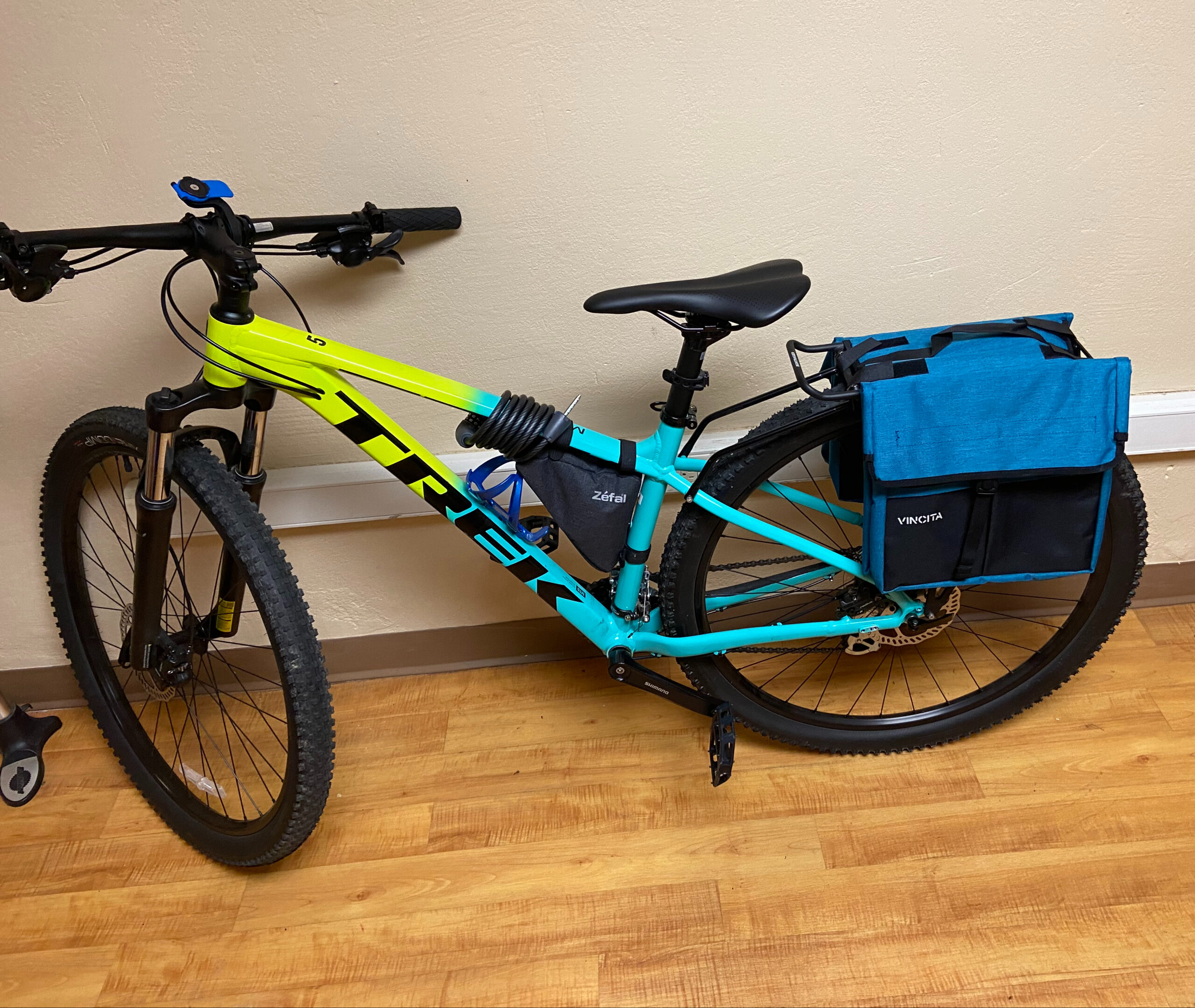Bicycle commuting might seem difficult at first, but once you know what you are doing, it is a fantastic way to get around! Taking a bike instead of a car has many benefits. It saves you gas money, helps you get exercise, lets you stay more focused in the present, and can even lower stress and anxiety. You don’t have to bike everywhere on every day to be a bike commuter, but even just one trip a week could have you gaining these benefits. One reason many people cite as to why they don’t commute via bicycle is that they don’t know how. This article is here to help with that.
The first step (beyond just getting a bike) is to make sure that your bike is in working condition. Check if the tires need air, the seat is at the right height, the handlebars aren’t twisted, etc. I recommend doing an ABC Quick Check as it is an easy to learn, yet vital to perform skill when it comes to using your bicycle. You can read more about what the ABC Quick Check is and how to do one here.
After making sure your bike is ready to be ridden, it is a good idea to plan your route ahead of time. I will posting an article later this month that has more information on route planning in regards to ETSU and Johnson City. For now, I recommend using a navigator app that has capabilities for bicycle routes. Google and Apple Maps are okay for this, but they often only route you through roads that need to be shared with cars. I like using Komoot, which has a bigger focus on biking and hiking. Select “Bike Touring” as the route category. This is also a good app for planning recreational rides and hikes as well. Strava is good for tracking routes, but does not necessarily help when planning them. RideSpot was my favorite app for both route planning and tracking, but has since stopped operating. It was funded by PeopleForBikes, an amazing non-profit that seeks to make North America the best continent for bicycle commuting.
Make sure to keep an eye on the weather when planning your bike ride. I set this event as a Bike-to-Work Week not Day for a reason. If the day you were originally wanting to ride is now a washout, try again when there is better weather. Rain will not hurt your bike, but high winds and low visibility can certainly make it more dangerous for you. Wearing high-vis gear and/or having lights on your bike are just a couple of ways to make you more visible to the traffic around you.
It is a good idea to find a route that has the fewest possible interactions with other kinds of transportation (pedestrians, automobiles, etc.). While not entirely avoidable when living in a city with a lackluster cycling infrastructure, it will make your ride safer and more pleasant. Also try to avoid hills as much as possible (unless you’re up for a challenge). Lastly, make sure you know where you are going to park your bike. If there are no bike racks around, your employer might let you bring it into the lobby or have another place for you to store it. If not, make sure you find something to lock your bike to, and that it is in an easily seen, well-lit area. This will hep deter bike thieves.
While planning your route, make sure to check what the local law says about riding a bicycle. In Tennessee, bikes are treated just like cars. We must obey stop signs, traffic lights, lanes, and everything else that cars do. However, there are a few more rules for bikes. Bicycles must stay on the right side of the right-most lane at all times unless they are turning left. In that case, the bicycle must be in the left or turning lane and clearly signal to the surrounding vehicles that they are turning left. Bikes must also be equipped with a front light and either a rear light or red deflector. You can read more about TN Bicycle Laws here.
Now that you have your route planned, it is time to pack up for work. If your bike has a basket, that is the easiest way for you to carry your things. A rack with some bungee cords or saddlebags is another great way for transporting items. However, people who are not avid bicyclists do not often have saddlebags for bikes. A messenger bag or backpack is an easy, affordable way for people on bicycles to carry their belongings. Most people probably already have one at home. Just make sure that the straps are not long enough to get caught in the wheels or chains.
Now that you know your bike works, where you will ride it, and how you will carry things, you are all set to start commuting. If you have any questions about commuting via bicycle, please let me know and I will do my best to answer.


